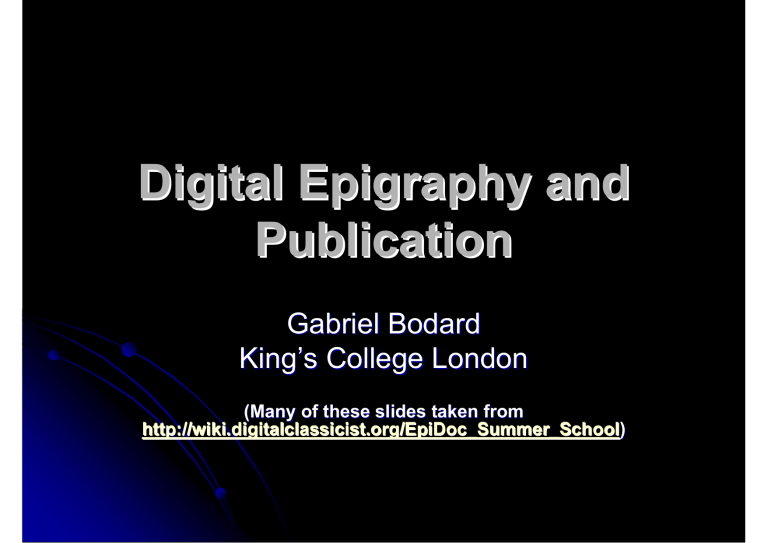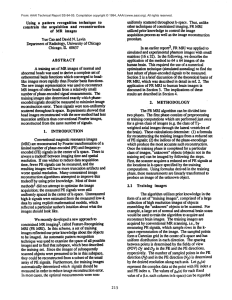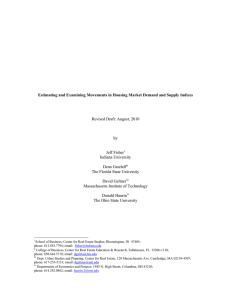Digital Epigraphy and Publication Gabriel Bodard
advertisement

Digital Epigraphy and Publication Gabriel Bodard King’s College London (Many of these slides taken from http://wiki.digitalclassicist.org/EpiDoc_Summer_School) Electronic Publication • • • • • • Accessibility (cost, volume, circulation) Scale (book size, unit cost of disc space) Media (colour images, video, interactive) Hypertext (internal/external/dynamic) Potential to update continuously (+/-) Iterative research tool Accessibility • Free access with internet collection o not everyone has good library e.g. Eastern Europe o not everyone has internet access (but cf. Negroponte) cf. Perseus, < 500 000 page views/month • Access outside of academia • Long-term sustainability • Scale • No limitation on page count • No limit on images • multiple tables of content o indices, appendices ... • bibliography in full o abbreviations expanded Media • Images o Colour images • Multimedia o animations o virtual reality o audio / video • Interactive media o walk-through / fly-through o "game" technologies Hypertext • • Internal: o link from ToC / indices to texts o crossreferences between texts o link to/from appendices o link to footnotes o thumbnails to images o dynamic maps they're great External: o bibliographic refs o other inscriptions (PHI, EAGLE, etc.) o dynamic links (source code available) Updates • Corrections o Updates o RSS feed of additions/changes o user comments/suggestions • *But*: stability of citation o periodic new editions? o permanent URLs o traceable history etc. Iterative research (Open Source) • Generated indices can be created before finished product • XML checking tools • Source code available for future editions o CC-by license • Transparency o core tenet of academic publication o "replicable results" The Epigrapher is Encoder • Leiden/Krummrey-Panciera/Petrae o o o • • • Well documented Arbitrary Strict set of sigla Interpretive edition Diplomatic transcription Apparatus Criticus Control your own work • • Epigraphers design and mastermind corpus Representations are interpretations: o ToCs, Indices, Concordances o Editions o Search interfaces • Technology works for us (not other way around) What you need to learn • • Basic XML EpiDoc distinctions o ( = Leiden and/or EAGLE) • Enough to review/correct texts: o As edited by others o As converted by tools What you need to do • Engage with EpiDoc community o Online fora, mailing lists, conferences • Become familiar with reference sources o EpiDoc Guidelines o Documentation wikis o SourceForge Why this is not difficult • You have already mastered: o Ancient history o Greek and Latin o Palaeography o Multiple modern languages o Leiden conventions o Publishers’ notations and requirements








